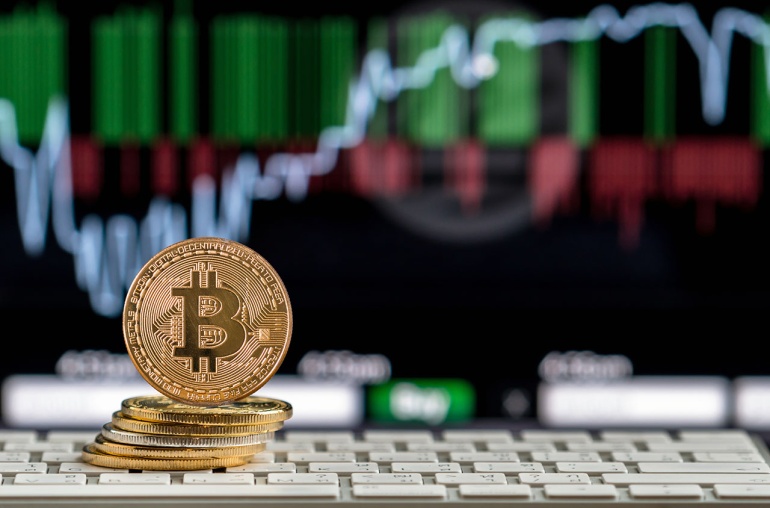The world is in a constant state of change, and technological innovations have led the charge in introducing several changes in how we live our lives. The world of digital currencies has rapidly changed from being new and unheard of to becoming a dominating presence. It is possible that it could become something that might change the world as we know it.
The increasing popularity of digital currency in recent years has led to many people wondering, “Will digital currency replace paper money?”
The short of it is, “Yes, digital currency will most likely replace paper money.” But there is a lot more to it than a simple and resounding ‘yes.’
Digital currency had entered the fray several years ago but had yet to become widely accepted because the world generally is slow to integrate drastic changes to how it works. The onset of COVID-19 sped up the shift towards digital and contactless payments with regular currency, but it also led to a surge in reliance on alternatives to traditional currency like cryptocurrency. The newfound acceptance for alternatives to fiat currency is something that will likely stay.
Eswar Prasad is the author of the book, “The Future of Money: How the Digital Revolution Is Transforming Currencies and Finance,” a senior professor of trade policy at Cornell University, and he used to be the head of the IMF’s China division. He believes that the era of cash is drawing to an end and that central bank digital currencies will now become the dominant force.
This post will discuss what is digital currency, different types of digital currency, and whether it will replace paper money to help you make more informed financial decisions.
What Is Digital Currency?
The term “Digital Currency” refers to any currency available entirely in an electronic form, without any tangible and physical version that you can touch and feel. It is easy to find digital currency a confusing term since electronic versions of traditional currency already exist. In fact, the financial systems in most countries already rely a lot on digitized forms of traditional currency.
The US has only around 10% of its overall money supply circulating in physical form. The rest of its cash is held in several bank deposits in electronic form. However, the digital currency we are referring to is not the electronic form of traditional currency.
You can easily go to an ATM and turn the electronic record of your currency holdings in your bank account into physical currency notes. With digital currency, you never see your holdings take any physical form. Digital currency remains entirely on computer networks and is exchanged for value digitally.
“Digital currency” is still a broad term that covers several types of currencies that exist today.
Different Types Of Digital Currency
There are several types of digital currency that exist today that are entirely different from the financial system that governs traditional currencies. This section of the post will discuss the different types of digital currencies to help you understand them. Knowing what each of these entails could help you understand why digital currency will likely replace paper money in the future.
Central Bank Digital Currencies
Central Bank Digital Currencies (CBDCs) are a form of money issued by central banks. CBDCs are not entirely commonplace today, but there are several of them in trial phases. Central banks back CBDCs and these currencies represent money that is a direct liability of the central bank.
Several countries worldwide are currently experimenting with CBDCs, but The Bahamas have already rolled out the world’s first CBDC, dubbed the “sand dollar.”
The US is currently reluctant to rollout a CBDC, but regulators are researching the possibility of introducing them in the country. CBDCs are run using decentralized ledger technology, a kind of database that can store several copies of financial records across various entities simultaneously.
It is a system similar to the technology that powers cryptocurrencies, another form of digital currency. However, the key difference is the centralization that exists with CBDCs. A central bank can manage these entities and regulate the flow of money across the database.
Cryptocurrencies
Cryptocurrencies are a form of digital currency that has sparked the digital currency revolution in the financial world. This is also a form of currency that exists entirely in digital form and is powered by decentralized ledger technology.
It means that cryptocurrencies also rely on a database containing several copies of financial records across multiple entities at the same time. However, the distributed ledger is not controlled by any central authority or regulatory body like central banks. The value for cryptocurrencies is mostly derived from supply and demand, and they tend to be relatively speculative.
Bitcoin is the foremost example of cryptocurrencies. Launched in 2009, it was intended to work as a peer-to-peer financial system. Bitcoin was launched with a limited supply that created an in-built scarcity that could prevent the new form of currency from losing its value due to oversupply.
The decentralized ledger technology, also called blockchain technology, was first used with Bitcoin, and it set up the basis for other cryptocurrencies to follow.
Cryptocurrencies can make payments more efficient because they allow transparent and rapid cross-border financial transactions. However, it is a speculative asset class without any physical backing that makes cryptocurrencies volatile.
The instability with cryptocurrencies has slowed down its potential to become a transactional medium like traditional currencies, but the in-built scarcity has made them popular as a store of value.
Stablecoins
Stablecoins are essentially cryptocurrencies themselves, but they come with a key difference: Stablecoins are not issued by central banks but are meant to be pegged to a reserve asset like gold or silver.
Stablecoins use the same decentralized ledger technology that powers cryptocurrencies and CBDCs. However, their values are not determined by central banks, nor do these currencies depend on supply and demand to derive their value. Instead, their value could be used to reflect the performance of an asset like the US dollar, gold, or other commodities.
The regulatory framework is still in progress, but stablecoins could become a viable means of exchange in the near future.
In A Nutshell
Global and widespread adoption of digital currencies is possible as the world becomes increasingly digital. In a matter of a few years, cryptocurrencies like Bitcoin have gone from being a new trend to being a massive store of value that has made many “crypto millionaires,” and it has changed how the world views the financial world in the digital age.
Will digital currency replace paper money? Definitely. Which form of digital currency will be the mainstay? It could be central bank digital currencies, stablecoins, or the cryptocurrencies that introduced the technology that enabled CBDCs and stablecoins. The possibilities are endless.
Did you find this post helpful about understanding what digital currency is and how it might replace paper currency? Keep following us for more useful articles on cryptocurrency, digital currency, and the evolving finance world in the digital era.



